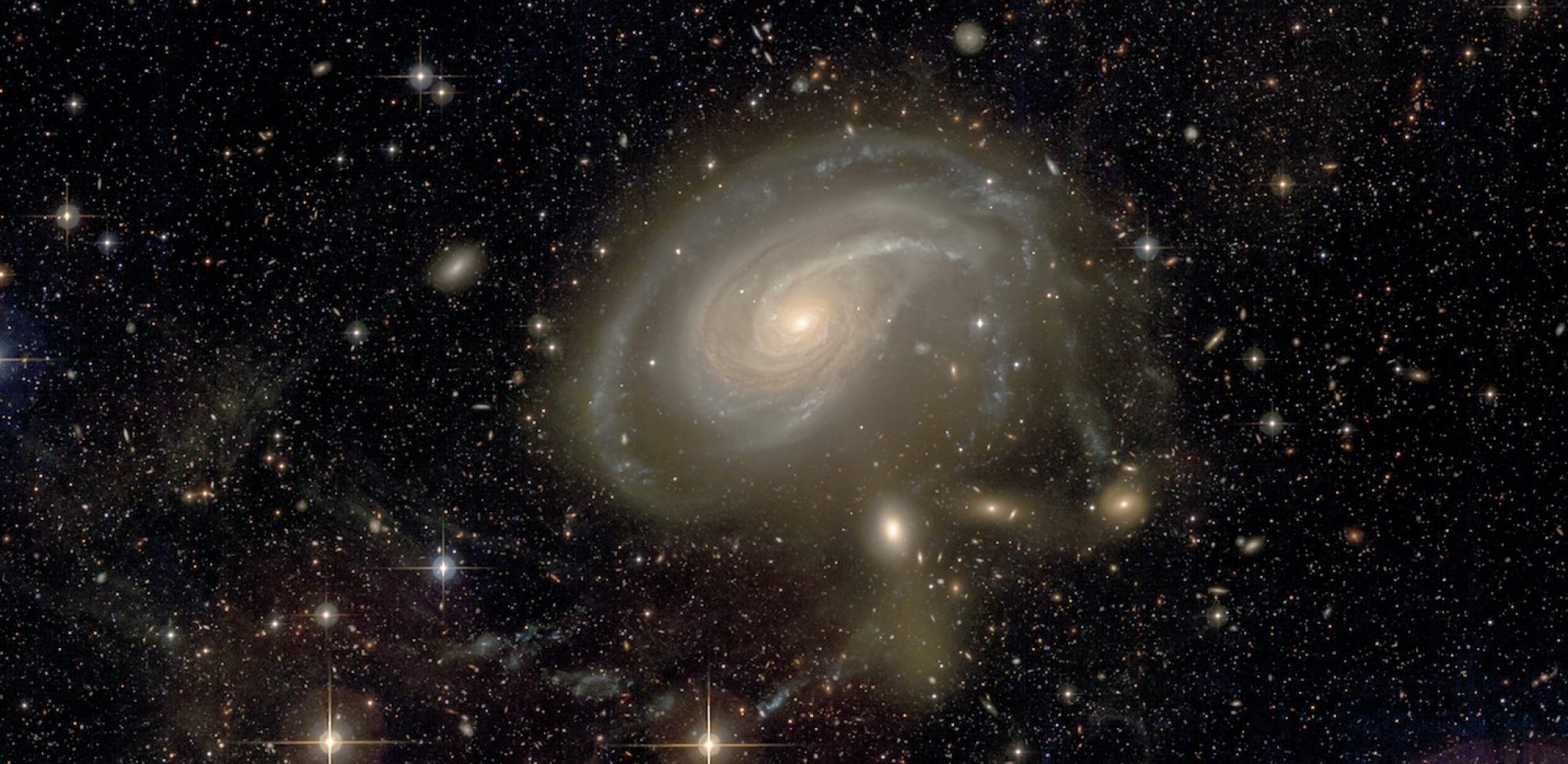
We investigate the evolution of stellar population gradients from z = 2 to 0 in massive galaxies at large radii (r > 2Reff) using 10 cosmological zoom simulations of haloes with 6 × 1012 M⊙ < Mhalo < 2 × 1013 M⊙. The simulations follow metal cooling and enrichment from SNII, SNIa and asymptotic giant branch winds. We explore the differential impact of an empirical model for galactic winds that reproduces the mass-metallicity relation and its evolution with redshift.
At larger radii the galaxies, for both models, become more dominated by stars accreted from satellite galaxies in major and minor mergers. In the wind model, fewer stars are accreted, but they are significantly more metal-poor resulting in steep global metallicity (<∇Zstars> = -0.35 dex dex-1) and colour (e.g. <∇g – r> = -0.13 dex dex-1) gradients in agreement with observations. In contrast, colour and metallicity gradients of the models without winds are inconsistent with observations. Age gradients are in general mildly positive at z = 0 (<∇Agestars> = 0.04 dex dex-1) with significant differences between the models at higher redshift. We demonstrate that for the wind model, stellar accretion is steepening existing in situ metallicity gradients by about 0.2 dex by the present day and helps to match observed gradients of massive early-type galaxies at large radii. Colour and metallicity gradients are significantly steeper for systems which have accreted stars in minor mergers, while galaxies with major mergers have relatively flat gradients, confirming previous results. The effect of stellar migration of in situ formed stars to large radii is discussed. This study highlights the importance of stellar accretion for stellar population properties of massive galaxies at large radii, which can provide important constraints for formation models.
Published in Hirschmann et al., 2015, MNRAS 449, 528

